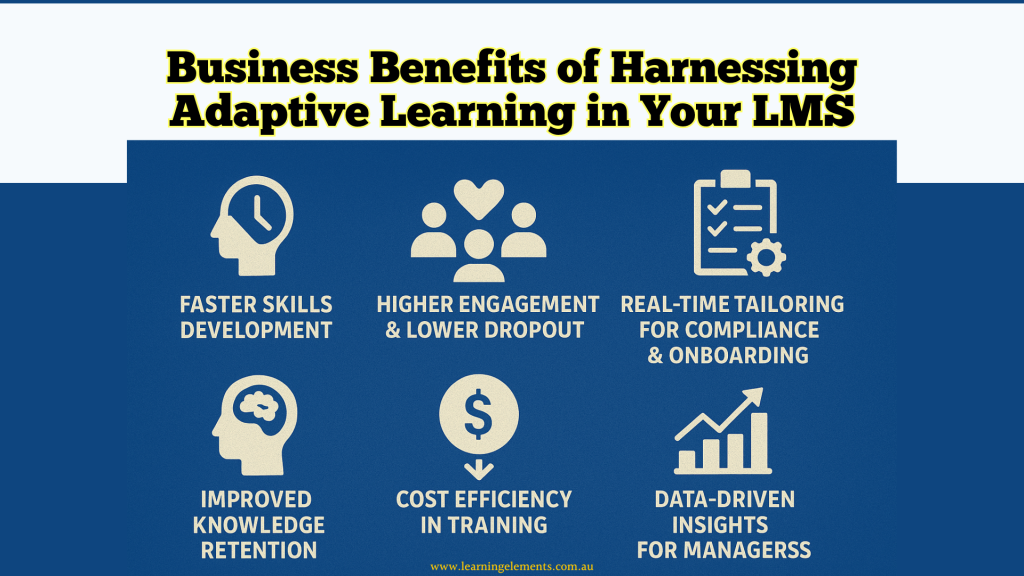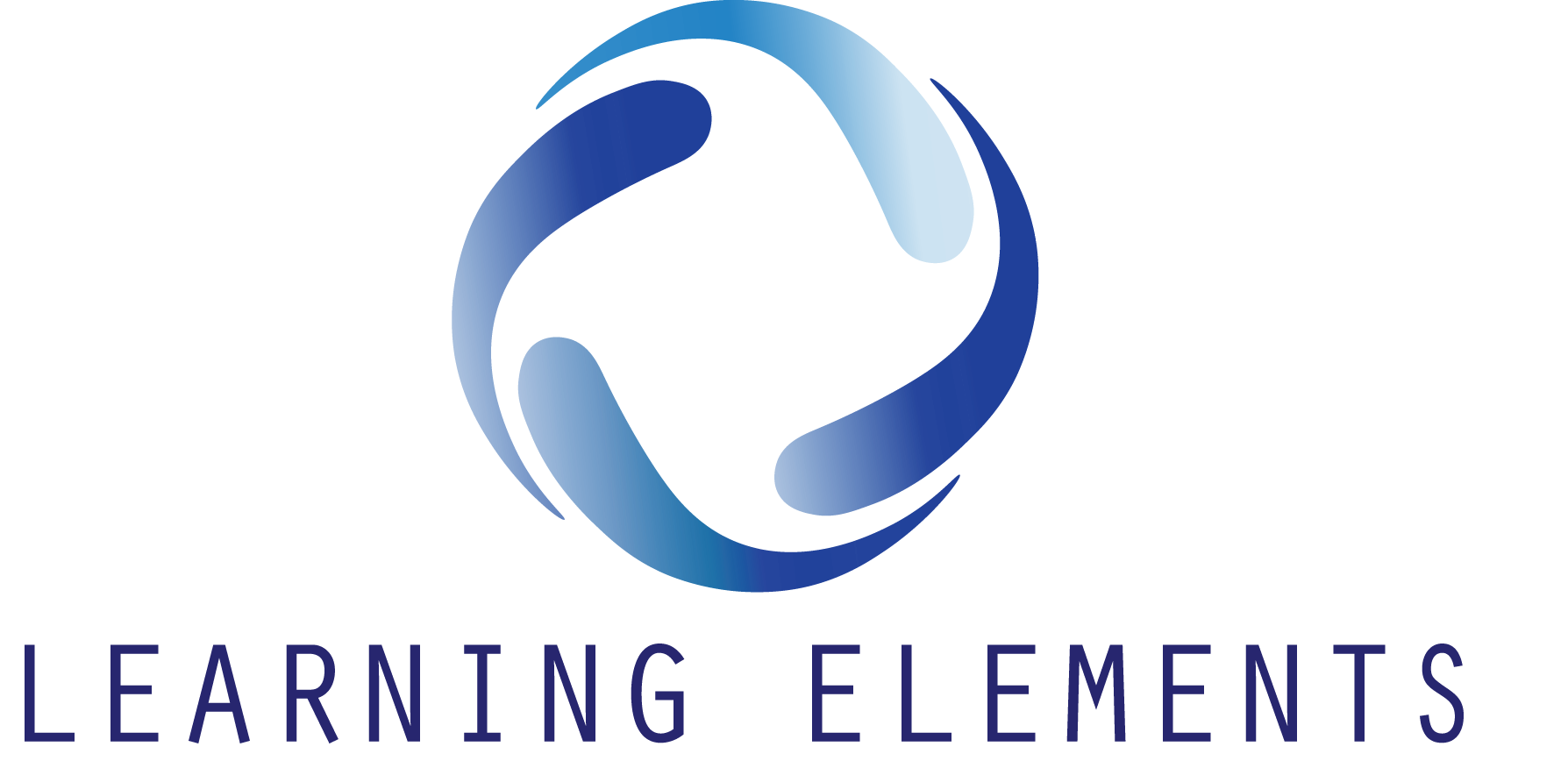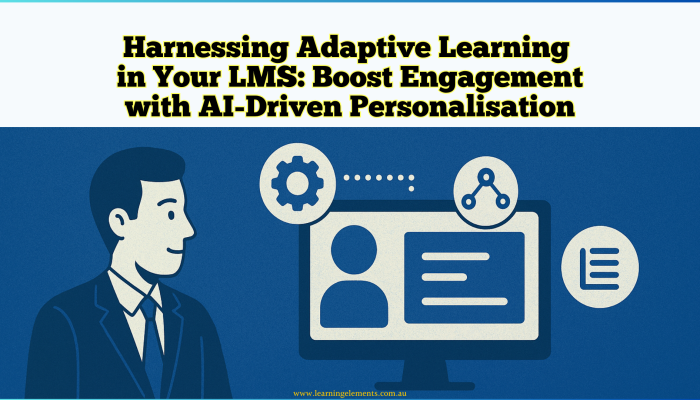Harnessing Adaptive Learning in Your LMS: Boost Engagement with AI-Driven Personalisation
Implementing effective workplace training has never been more important—or more challenging. As businesses strive to upskill employees and keep pace with rapid change, many are discovering that traditional learning methods fall short. Harnessing Adaptive Learning in Your LMS offers a smarter approach, using AI-driven personalisation to shape learning journeys that meet employees where they are.
By creating tailored pathways, organisations can not only improve learner engagement but also accelerate skill development and boost overall performance. This shift represents more than just a technology upgrade—it’s a fundamental change in how training is designed and delivered.
To understand why adaptive learning matters, let’s first look at the limitations of traditional training approaches.
Why One-Size-Fits-All Training No Longer Works
Traditional learning management systems (LMS) often deliver the same content to every learner, regardless of their skills, pace, or preferences. While this approach might seem efficient, it fails to account for the unique needs of modern learners. The result? Low engagement, slow progress, and higher dropout rates.
This is where adaptive learning powered by AI-driven personalisation steps in. Instead of forcing learners into a rigid path, it tailors the training experience in real time—ensuring that learners stay engaged, motivated, and on track.
What is Adaptive Learning?
Adaptive learning is an innovative approach to training that uses data and technology to shape the learning experience around each individual. In a corporate setting, adaptive learning is powered through the LMS, which acts as the hub that delivers personalised modules, tracks progress, and integrates AI-driven insights into everyday training workflows.
Instead of assigning the same module to every employee, an adaptive LMS can:
- Respond to learner performance, adjusting content difficulty on the go.
- Identify skill gaps, serving up targeted resources.
- Personalise training journeys, ensuring that learners only focus on what’s relevant to them.
Think of it as having a digital coach inside your LMS, guiding each learner to the right resources at the right time.
AI & Data-Driven Learning Pathways
AI plays an important role in adaptive learning by collecting, interpreting, and responding to learner data.
Here’s how it works:
- Dynamic content sequencing – Learners progress at a pace that matches their abilities. High performers move to advanced modules, while others receive additional practice.
- Knowledge gap detection – AI identifies weak areas and delivers targeted resources to close skill gaps efficiently.
- Predictive analytics – The system anticipates potential challenges and offers preventative resources before learners fall behind.
- Behavioural insights – Metrics such as time spent on modules, quiz attempts, and engagement rates shape future content recommendations.
- Smart recommendations – Courses, microlearning, and resources are suggested based on individual goals, performance, and preferences.
This data-driven approach transforms an LMS into a responsive, learner-first platform, ensuring no two learners follow the same journey. For organisations, this means the LMS is no longer just a content repository—it becomes an intelligent system that continuously adjusts to learner needs. The result is training that’s not only more engaging but also highly relevant and efficient.
Of course, with AI comes responsibility. Organisations need to ensure adaptive systems are transparent, unbiased, and respectful of learner privacy. By selecting trusted vendors and applying ethical AI principles, businesses can enjoy the benefits of personalisation while protecting employees’ trust.
Book a consultation to explore how adaptive learning could fit your LMS, or discover how it can be applied step by step by clicking the buttons below.
Examples of Adaptive Learning in Action
Adaptive learning isn’t just theory—it’s already transforming corporate training and education.
When embedded into an LMS, adaptive features reshape the learner’s experience. Some practical examples include:
- Adaptive Quizzes – Test questions that adjust in difficulty depending on learner performance.
- Personalised Content Feeds – Learners see articles, videos, and modules curated specifically for their skill level and interests.
- Microlearning & AI Recommendations – AI suggests next steps, such as advanced training or refresher courses, based on progress.
These tools ensure learners stay challenged, not frustrated, creating a more enjoyable and effective training environment.
Adaptive learning isn’t limited to one sector—it can be tailored to meet the needs of different industries.
- Healthcare – Adaptive modules can deliver specialised training for clinical staff while providing compliance-focused learning for administrative employees.
- Finance – Regulatory courses can update automatically as new compliance rules are introduced, ensuring teams stay current without sitting through irrelevant content.
- Retail – Product knowledge training can adapt based on whether an employee works in sales, logistics, or customer support.

Business Benefits of Adaptive Learning in Your LMS
These benefits come to life when the LMS is enhanced with adaptive features, ensuring the platform itself drives learner outcomes and business value.
1. Faster Skills Development
Adaptive learning streamlines the training process by identifying what learners already know and skipping redundant material. Instead of spending hours re-learning concepts, employees focus on areas that truly need attention.
For example, a seasoned employee who already understands workplace safety basics can move directly to advanced compliance scenarios, while a new hire might receive additional foundational content. This individualised approach accelerates skills acquisition, reduces training hours, and gets employees job-ready faster.
2. Higher Engagement & Lower Dropout
When learners feel that training is relevant, achievable, and personal, they’re far more likely to stay engaged. Adaptive learning ensures that content matches each learner’s pace and capability, reducing frustration and boredom.
This approach not only encourages consistent participation but also dramatically lowers dropout rates—a common issue in traditional, one-size-fits-all training. The result is a learning environment that feels supportive rather than overwhelming.
3. Real-Time Tailoring for Compliance & Onboarding
Compliance and onboarding are two of the biggest training challenges for organisations. Traditional programs often overload employees with information, much of which may not apply to their role.
Adaptive learning solves this by delivering only the content each learner needs—and updating it in real time as regulations change. For onboarding, it allows new hires to progress at their own speed, ensuring they retain crucial information while shortening time-to-productivity.
Example: An adaptive LMS can assign detailed compliance modules to employees in high-risk roles, while giving shorter refresher versions to staff who only need basic awareness.
4. Improved Knowledge Retention
One of the greatest challenges in training is ensuring that information actually sticks. Adaptive learning uses reinforcement techniques, such as spaced repetition and adaptive quizzes, to strengthen memory recall.
By presenting knowledge in different contexts and adjusting difficulty based on learner performance, adaptive systems help employees retain and apply skills more effectively in the workplace.
5. Cost Efficiency in Training
Adaptive learning reduces wasted training time and resources. Instead of every employee completing the same lengthy course, individuals only engage with content that adds value to them.
This leads to lower training costs per employee, fewer hours away from the job, and a better return on investment for organisations. Over time, the savings compound as training becomes both shorter and more impactful.
6. Data-Driven Insights for Managers
Adaptive learning platforms provide detailed analytics about learner progress, knowledge gaps, and performance trends. These insights give managers and L&D teams a clear picture of workforce readiness.
- Spotting common areas of struggle allows trainers to improve content.
- Identifying top performers highlights employees ready for advancement.
- Monitoring compliance completion ensures regulatory obligations are met on time.
This makes training not just a learning tool, but a strategic business resource.
7. Personalised Career Development
Beyond compliance and skills training, adaptive learning can support long-term career pathways. By mapping individual strengths and interests, the LMS can recommend training aligned to career goals—whether that’s leadership development, technical expertise, or cross-functional skills.
This fosters a sense of growth and loyalty among employees, improving retention and positioning the organisation as an employer of choice.
8. Future-Proofing Workforce Skills
Another advantage of adaptive learning is its role in future-proofing the workforce. As industries continue to evolve, adaptive systems ensure employees are reskilled and upskilled in line with emerging roles and technologies. This approach helps organisations remain agile and resilient, ensuring they have the right skills at the right time—no matter how quickly the business landscape changes.
Schedule a 30-minute consultation with us to explore how adaptive learning could fit your LMS
Learner Experience & Accessibility
Adaptive learning also enhances learner experience by creating a more inclusive training environment. Because pathways are personalised, employees with different learning speeds, preferences, or abilities can all succeed without feeling overwhelmed. This is especially valuable for neurodiverse learners or staff balancing training with demanding roles. By making learning more accessible, organisations not only improve outcomes but also build a culture of equity and support.
Implementation Hurdles
While the benefits are clear, organisations may face challenges when implementing adaptive learning in their LMS.
- Data Privacy Concerns – Collecting learner data requires strict compliance with GDPR and other regulations.
- Integration Complexity – Adaptive tools must work seamlessly with existing LMS platforms.
- Admin Skills Gap – Training administrators may need upskilling to design adaptive pathways effectively.
These hurdles are real but not insurmountable with the right support.
These challenges may seem complex, but the good news is that with the right guidance and tools, they can be overcome more smoothly than many organisations expect.
How the Learning Elements team Helps
At Learning Elements (LE), we help organisations unlock the full potential of adaptive learning by:
- Hands-on Setup & Configuration – Ensuring your LMS is correctly integrated with AI-powered adaptive tools.
- Designing adaptive pathways for clients – We create personalised learning journeys aligned with your organisation’s goals.
- Ongoing support & training – We equip your admins with the skills they need to manage and evolve adaptive pathways.
Our expertise means you can enjoy the benefits of adaptive learning without the typical headaches of implementation.
FAQs
- What makes adaptive learning different from traditional eLearning? Adaptive learning adjusts to each learner in real-time, while traditional eLearning delivers the same content to everyone.
- Is adaptive learning only useful for large organisations? Not at all—SMEs can also benefit from increased engagement and efficiency.
- Can adaptive learning be used for compliance training? Yes, it’s particularly effective in compliance by tailoring modules to what learners actually need.
- What data is required for adaptive learning to work? Typically quiz results, course completion rates, and behavioural analytics.
- How can I start integrating adaptive learning into my LMS? Begin with a pilot program using adaptive quizzes and personalised content feeds, then scale with expert guidance.
- Does adaptive learning work for remote and hybrid workforces? Yes, because it allows employees to learn anytime, anywhere, while still providing personalised support.
- How soon can organisations see results after implementing adaptive learning? Most companies notice improvements in engagement and completion rates within the first 3–6 months.
Conclusion
Harnessing adaptive learning in your LMS isn’t just about adding another feature to your platform—it’s about transforming the way learning is experienced across your organisation. By combining AI-driven personalisation with your LMS, you can deliver content that adapts in real time, ensuring that every learner stays engaged, motivated, and on track.
For businesses, this means more than higher course completion rates. It means faster onboarding, more effective compliance training, and accelerated skills development that directly supports organisational goals. Adaptive learning doesn’t replace your LMS—it amplifies its value, turning it into a powerful tool for both learners and administrators.
With the right partner, these benefits are within reach. The only question is: are you ready to make the shift?
Ready to transform your LMS with adaptive learning? Book a FREE consultation today and explore how AI-driven personalisation can boost engagement, accelerate skill development, and streamline compliance training.


